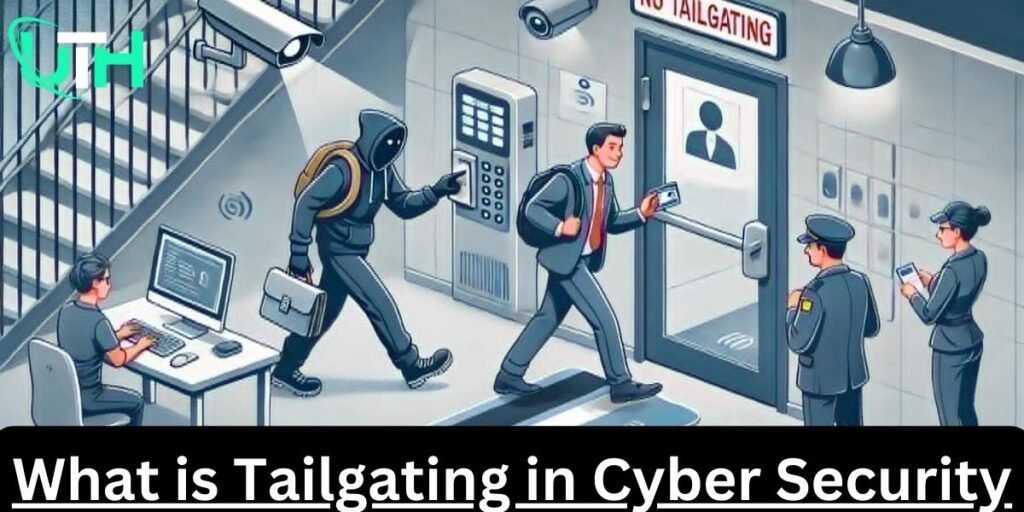What is tailgating?
The literal meaning of “tailgating” is “unauthorized following” or “following closely behind.”. The term tailgating is usually associated with two main contexts: security and driving. In security — tailgating refers to an unauthorized person gaining access to restricted places by following an authorized person. In driving — tailgating refers to following the other vehicle closely, enhancing the risks of accidents. Both cases of tailgating concern safety and security risks.
What is Tailgating in Cyber Security?
In the field of cybersecurity, “tailgating is a social engineering technique in which an unauthorized individual tries to gain access to a restricted location or system by following an authorized person.”. However, tailgating may occur in physical (e.g., entering a building) or virtual (e.g., accessing a network) modes. However, the goal in both cases is to gain unauthorized access to the security protocols of any individual or organization.
Tailgating vs Piggybacking
Tailgating is usually known as piggybacking. However, there is a noticeable but negligible difference between tailgating and piggybacking;
- Tailgating: When an unauthorized person follows closely behind an authorized one to gain access to a restricted place without the permission of the authorized person.
- Piggybacking: when an unauthorized individual follows closely behind an authorized person with the permission of the authorized person.
In short, tailgating is unauthorized and difficult to detect, but piggybacking may be authorized or unauthorized.
What is a Tailgating Attack
“Tailgating attack is a low-tech social engineering attack in which a tailgater tries to gain unauthorized access to a restricted area by following closely behind an authorized person.”
Tailgating exploits human behavior rather than technical susceptibility. In a Tailgating attack, the tailgater pretends to be a delivery person, new coworker, or ex-coworker to gain access to a restricted area. The attacker can request the employee to hold the door or use the employee’s cell phone to get access to the sensitive location and gain sensitive information. Nevertheless, once the attacker enters the restricted area, he can easily gain sensitive information such as document files and other security protocols like fingerprint or retina scanners. The unauthorized party can even exploit human security guards.
Examples of Tailgating Attacks
The most common examples of tailgating attacks are the following:
- Following an employee: The attackers can usually wait near a security gateway for an authorized person. They can enter the protected place by following an authorized employee, relying on the employee to open the door without verifying their identity.
- Pretending as a delivery person: The tailgater poses as a delivery man or vendor carrying packages or supplies for the authorized person. The employees might help them open the door without asking for their verification.
- Pretending to Forget an ID: The attackers pretended to be new employees and claimed to have forgotten their access ID at home. Therefore, the attackers request an authorized person to open the door for them. In this way, they can easily gain access to restricted places or digital systems.
- The “Hands Full” Trick: Sometimes, attackers may carry a large number of items and reveal that it’s difficult to open the door utilizing their own access card. That’s why an authorized person quickly opens the door for attackers to help them.
- After-Hours Access: Attackers may wait after the usual working time when there are fewer people around the workplace, and human security is not fully alert. The attackers may enter the protected place pretending to be night-shift employees, or they have forgotten something personal inside the building.
Strategies to Prevent the Tailgating Attack
The organizations may implement various strategies to effectively prevent tailgating attacks. These strategies focus on both physical security aspects and employee awareness training. Here are some common techniques to protect from tailgating attacks:
Security Awareness Training
Security awareness training is an initial and crucial step to avoiding Tailgating attacks. Every employee must be aware of the danger of a tailgating attack. Furthermore, to ensure their safety at all times, employees must receive education about potential ways to combat such cyberattacks.
Physical Security Protocols
Physical security measures are one of the most effective techniques to prevent tailgating attacks. These security protocols just allow authorized people to enter a restricted place by verifying their identity according to the provided data. These physical barriers include:
- Electronic access doors
- Laser sensors
- Biometric scanners
- Smart cards
- Trained human security guards
These physical barriers open the entrance for authorized people and allow a single person to enter a protected area at a time. Additionally, these physical barriers may prove useful in tailgating detection and create more difficulties for attackers to pass out from the entrance, following behind the authorized person.
Remote Video Monitoring
The implementation of security cameras at sensitive key places, especially at the entrance, may be the best practice to prevent tailgating attacks. These security cameras differentiate between authorized and unauthorized people, aiding in the identification of suspicious individuals.
Visitor Management
Implement the proper rules and regulations for visitors. Assign the visitors’ badges with specific color tags. Make sure to wear these identifiable badges for all visitors while visiting a restricted area. This ensures that it is easy to detect that any visitor who enters has ended his visiting time and is always present with an authorized person.
